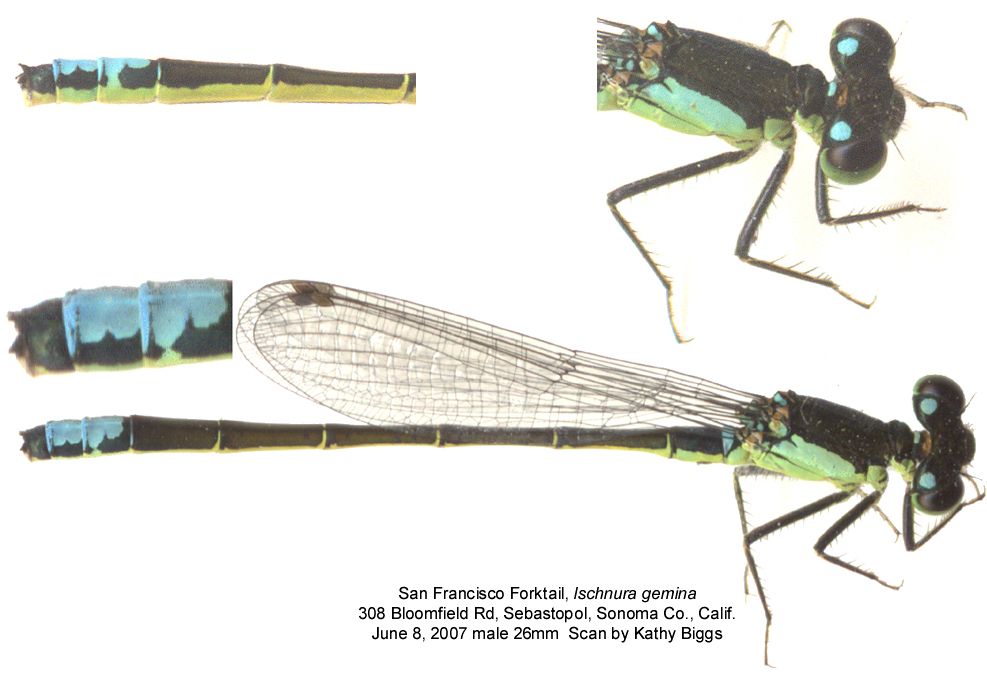

San Francisco Forktail male images
These images are of a male San Francisco Forktail (Ischnura gemina).
On June 8, 2007 as part of a scientific study, I was taking notes on the species in my backyard pond. I was surprised to see what appeared to be a Black-fronted Forktail, as I'd never, in the pond's 10 year history, seen one there! Furthermore, I was aware of only one record for that species in the county. The glare off the thorax made it difficult to determine if there were dots or stripes atop the thorax. So I got my net and gently 'pancaked it.' In this method of capture, the net is held by the handle and the tip of the net and then slowly lowered down over the damselfly and the vegetation it is on, thus the chance to injure the damsel is minimized. I didn't want a 'damsel in distress'!!
Boy was I glad I did, for when I looked at it magnified (first by inverting my binoculars and then thru a 10X hand lens), I immediately noticed that not only did it not have any dots or stripes atop the thorax, but it also did not have projecting lower appendages! With awe it struck me, my backyard pond had the very rare San Francisco Forktail, Ischnura gemina, on it!
Gemina=twin: The San Francisco Forktail is the twin to the Black-fronted Forktail (Ischnura denticollis). They are so identical that it is usually necessary to have them in hand to make the ID. This was not a new county record, as there is an old record from the 1980s from Bodega Bay, and more recently Dave and I had found them at several sites along the Estero Americana (which divides Marin and Sonoma Counties).
Since it was already in hand, I took it in to the refrigerator for a 'nap' while I finished my survey.
He was cool and calm and I was able to make several scans to document his visit before releasing him.
See below:
 |
 |
Below are a few 'posed' pictures taken after I scanned him, while he was in 'recovery.'
And the final image, after he'd flown off to 'hide' in the vegetation (Poor Man's Orchids).
Other species on the pond that day [June 8, 2007 1:00-2:00] include (in the order seen).
Please use your back button to return to
Bigsnest Pond Visitors
California Dragonflies
or
Southwest Dragonflies
Thanks for your interest. Kathy Biggs